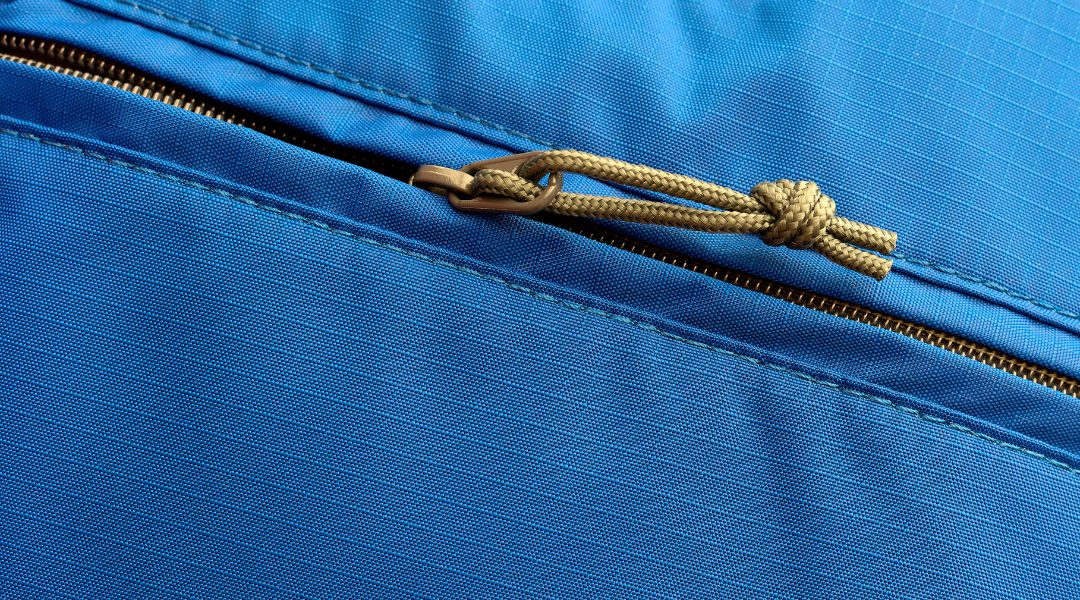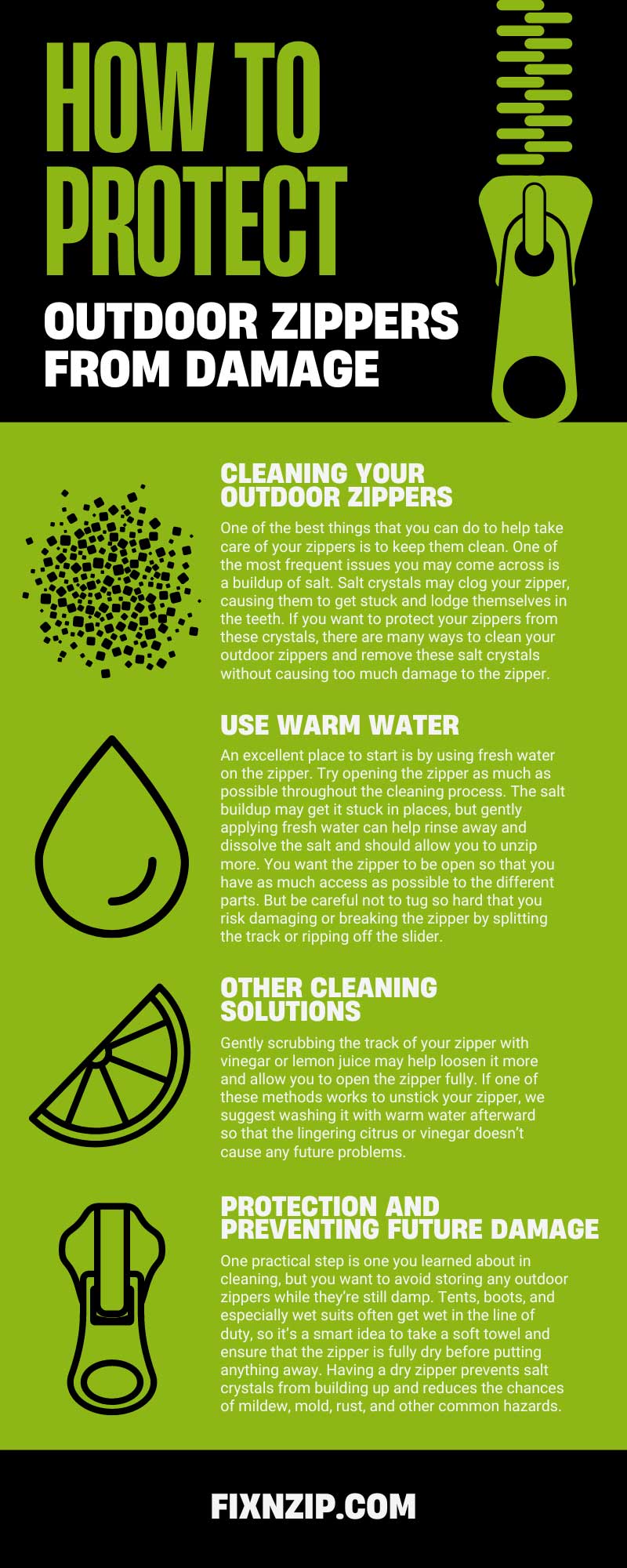
The zippers that we have on things we use in the great outdoors are the ones that need to stay in prime condition. However, these are also the ones that are most likely to suffer from wear and tear, salt buildup, rust, and other normal hazards due to regular storage in more potentially harmful environments. Some of the most common outdoor zippers are those found on tents, boots, wet suits, and other similar products. If you’re wondering how to protect outdoor zippers from damage, FixnZip has some helpful tips for keeping things in good condition, making repairs, and preventing any future damage.
One of the best things that you can do to help take care of your zippers is to keep them clean. One of the most frequent issues you may come across is a buildup of salt. Salt crystals may clog your zipper, causing them to get stuck and lodge themselves in the teeth. If you want to protect your zippers from these crystals, there are many ways to clean your outdoor zippers and remove these salt crystals without causing too much damage to the zipper.
An excellent place to start is by using fresh water on the zipper. Try opening the zipper as much as possible throughout the cleaning process. The salt buildup may get it stuck in places, but gently applying fresh water can help rinse away and dissolve the salt and should allow you to unzip more. You want the zipper to be open so that you have as much access as possible to the different parts. But be careful not to tug so hard that you risk damaging or breaking the zipper by splitting the track or ripping off the slider.
Gently applying fresh, warm water may help loosen things up, but we recommend taking a small brush, like a toothbrush or similar device, and scrubbing the zipper gently to try to loosen it up. Once again, it’s a good idea not to scrub so hard that you damage the material or affect the fabric surrounding the track.
If you still have jamming issues with your zipper even after cleaning it with fresh water, you may want to consider trying some other solutions. Gently scrubbing the track of your zipper with vinegar or lemon juice may help loosen it more and allow you to open the zipper fully. If one of these methods works to unstick your zipper, we suggest washing it with warm water afterward so that the lingering citrus or vinegar doesn’t cause any future problems.
You may need to try a special lubricant for particularly stubborn zippers or ones with more significant amounts of salt crystals. There are wide varieties of sprayable lubricants that can help you clean your outdoor zipper. WD-40 is a common example many people already have in their homes or garages, but we advise caution when using this spray on outdoor zippers. The standard lubricant may be perfectly fine for many metal zippers, but the chemicals may do more harm than good on zippers made from brass, nickel, rubber, or certain types of plastic. If you’re not positive about the material of your zipper, consider investing in a specialized zipper lubricant that you can find in most hardware or hobby shops.
After lubricating and cleaning your outdoor zipper, take a towel and gently dry it with gentle dabs. Once everything is clean and dry, we suggest opening and closing your zipper a few times to ensure it’s working smoothly and that there are no remaining snags or blockades.
When you want to protect your outdoor zippers from damage, cleaning is a great place to begin. But there are many more helpful tips we recommend following if you want to prevent future damage and clean less often in the future.
One practical step is one you learned about in cleaning, but you want to avoid storing any outdoor zippers while they’re still damp. Tents, boots, and especially wet suits often get wet in the line of duty, so it’s a smart idea to take a soft towel and ensure that the zipper is fully dry before putting anything away. Having a dry zipper prevents salt crystals from building up and reduces the chances of mildew, mold, rust, and other common hazards.
For additional protection, many outdoor zippers benefit from some form of protective coating such as rubber, wax, or beeswax. These coatings not only help keep zippers dry but help keep dirt, grime, and other debris out of the inner workings. Many zipper repair kits come with some form of protective coating you can apply, but one of the most vital steps is applying these coatings after performing a thorough cleaning and allowing it to dry. Applying a protective coating to a zipper with dirt or salt on the track may lead to further damage.
When storing anything with an outdoor zipper on it, we recommend keeping the zipper zipped up to keep everything held tightly together and prevent any outside forces or hazards from disrupting the track or messing up the teeth. However, while you want to keep the zipper closed, we suggest regular lubrication every one to two months. Open and close the zipper and perform the necessary cleaning steps to keep it in good condition.
Due to their frequent exposure to the elements of nature and because people often store them in harsher conditions than our day-to-day wardrobe, outdoor zippers frequently suffer from issues. They require regular maintenance, cleaning, and repair. Performing a small handful of extra steps on a regular basis will save your equipment from needing replacements and additional work, keeping it in working condition for longer.
If you’re looking for additional information on how to fix a zipper, the experts at FixnZip have the help you need. FixnZip offers a variety of zipper replacement kits and articles on zipper maintenance and repair and has trained staff ready to address your questions, comments, and concerns. Visit our website for more information, or contact us today to get the answers you need.

